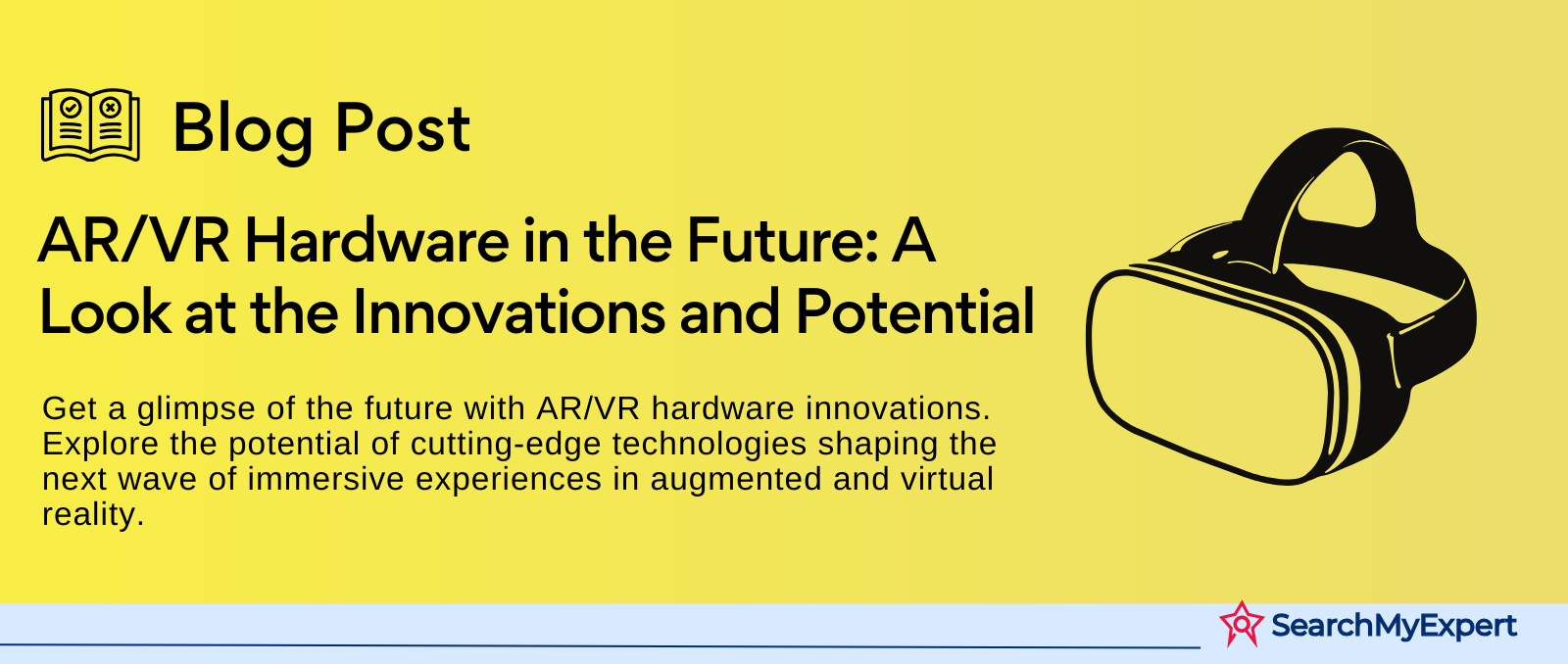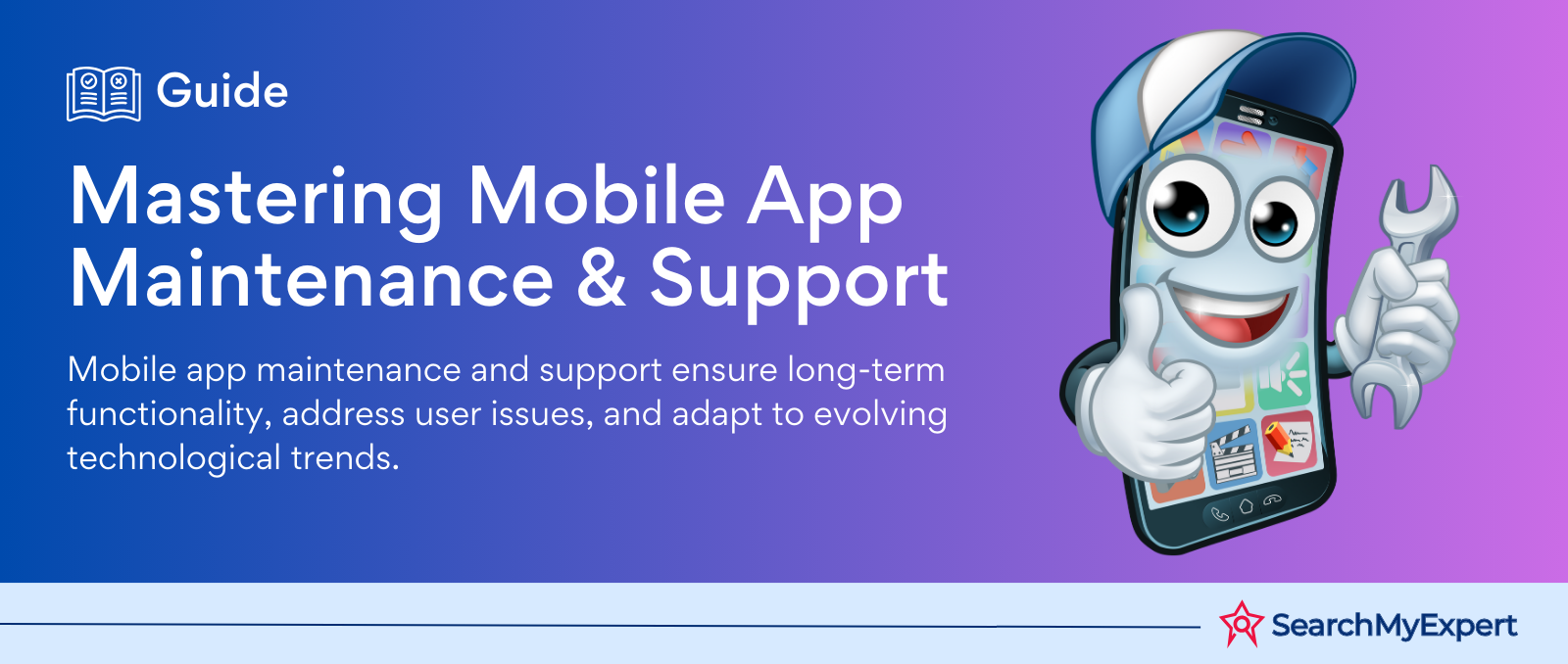AR/VR Hardware in the Future: A Look at the Innovations and Potential

Augmented Reality (AR) and Virtual Reality (VR): Transforming Our World
In today's rapidly evolving digital landscape, two technologies stand out for their ability to reshape our perception of reality: Augmented Reality (AR) and Virtual Reality (VR). These innovations are not just futuristic concepts but are increasingly becoming integral to various aspects of our lives, from entertainment and education to industry and healthcare.
Understanding Augmented Reality (AR)
Augmented Reality (AR) is a technology that overlays digital information into the real world. It enhances our natural environment by superimposing computer-generated images, sounds, or other data, thus providing a composite view. The most striking feature of AR is its ability to bring digital interactions into the physical space, seamlessly blending the real and the virtual. Popular AR applications include smartphone games that project digital creatures into real-world surroundings and applications that allow you to visualize furniture in your home before purchasing.
Exploring Virtual Reality (VR)
Virtual Reality (VR), in contrast, immerses users in a completely digital environment. It replaces the real world with a simulated one, often requiring specialized headsets or rooms equipped with immersive sensory equipment. VR creates an entirely artificial experience, where users can interact within a computer-generated environment. This technology is widely used in gaming, providing a deeply immersive experience, but its applications extend to training simulations for various professions, including pilots and surgeons.
Key Differences Between AR and VR
- Environmental Interaction: AR integrates digital elements into the real world, allowing users to interact with both simultaneously. VR, however, creates a fully virtual environment that is disconnected from the physical world.
- User Perception: In AR, the user remains in contact with the real world, seeing it through a digital overlay. VR users are entirely enclosed in a virtual space, losing contact with their actual surroundings.
- Hardware Requirements: AR can often be experienced with just a smartphone or tablet, whereas VR typically requires more specialized gear like headsets, gloves, and sometimes room-scale setups.
The Rising Significance of AR/VR Hardware
The advancements in AR/VR hardware are a testament to the growing importance of these technologies. The hardware, ranging from simple AR-enabled smartphones to sophisticated VR headsets and accessories, is becoming more accessible and affordable. These developments are crucial as they make AR and VR experiences more immersive, interactive, and engaging, opening up endless possibilities in various fields.
AR Hardware Essentials
Augmented Reality (AR) hardware encompasses a variety of devices, including smart glasses, headsets, and other wearable technologies, each integrating multiple components to create an immersive experience. Here's a detailed exploration of the core components and functionalities:
Smart Glasses and Headsets:
These are the most recognizable forms of AR hardware. They typically include:
- Display: This is where the digital content is overlaid onto the real world. In AR devices, displays are often transparent, allowing users to see both virtual and real-world elements simultaneously.
- Tracking Systems: These systems keep track of the user's head movements and adjust the virtual display accordingly. They often use gyroscopes, accelerometers, and sometimes external cameras or sensors.
- Cameras and Sensors: These are crucial for understanding and interacting with the real world. They can include depth sensors, which help the device understand the 3D structure of the environment, and cameras for image recognition and tracking physical objects.
Processors:
The processor in AR hardware is akin to a computer's CPU. It processes all the data from the sensors and tracking systems, renders the AR content, and manages the device's software and user interface.
Functionalities:
- Display Functionality: The primary function is to seamlessly integrate digital content into the user's physical environment. This requires advanced optics and often uses waveguide or projection-based technology.
- Tracking and Image Recognition: These functions are key for a convincing AR experience. They enable the device to accurately overlay digital information on the real world and keep it in place as the user moves. Image recognition allows the device to identify and interact with real-world objects and surfaces.
Types of AR Hardware and Their Uses:
- Consumer Headsets: These are generally designed for gaming, entertainment, or simple informational overlays. They tend to focus on comfort, ease of use, and affordability.
- Enterprise Applications: AR devices for enterprise use are often more robust and feature-rich. They might include advanced sensors for industrial applications, higher processing power for complex tasks, and enhanced durability for use in challenging environments.
VR Hardware Breakdown
Virtual Reality (VR) hardware offers an immersive experience by creating a simulated environment that can be interacted with in a seemingly real or physical way. The key components of VR hardware and their roles in creating an immersive experience are as follows:
Headsets:
The most critical component of VR hardware, headsets consist of:
- Display: Each eye has a screen, providing a stereoscopic 3D image to create a sense of depth. The visual fidelity (resolution, refresh rate, and field of view) is crucial for an immersive experience.
- Motion Tracking: This includes gyroscopes, accelerometers, and sometimes external sensors or cameras to track the user's head movements. This ensures that the visual display responds accurately as the user looks around the virtual environment.
- Audio Output: Integrated headphones or spatial audio technology enhance the realism by providing 3D audio that changes with the user's movements.
Controllers:
These are handheld devices that allow users to interact with the virtual environment. They often include:
- Buttons and Joysticks: For traditional gaming inputs.
- Motion Sensors: To track the position and movement of the user's hands, enabling natural and intuitive interactions within the VR environment.
Haptic Feedback:
This technology provides tactile feedback, simulating the sense of touch or motion. It enhances the realism of the VR experience by allowing users to 'feel' virtual objects or forces.
Base Stations or External Sensors:
Some VR systems use external devices to enhance tracking accuracy and spatial awareness. These are especially important for room-scale VR, where the user can walk around in a physical space that is mirrored in the virtual environment.
Different VR Hardware Options and Price Points:
- High-End Headsets (e.g., Valve Index, HTC Vive Pro): These offer the best visual fidelity, tracking accuracy, and overall experience but are also the most expensive. They often require a powerful PC to run.
- Standalone VR Headsets (e.g., Oculus Quest): These are all-in-one units that don't require a PC. They are more affordable and user-friendly but might offer lower visual fidelity compared to high-end headsets.
- Mobile VR Platforms (e.g., Samsung Gear VR, Google Daydream): These use a smartphone as the display and processor, making them the most affordable but also the least immersive option due to lower processing power and lack of advanced tracking.
Beyond the Basics: Advanced Features
Emerging trends and advanced features in AR/VR hardware are pushing the boundaries of immersive technology, enhancing user experiences, and expanding the potential of applications across various fields. Let's delve into some of these cutting-edge features:
Eye Tracking:
- Functionality: Eye tracking technology in AR/VR devices follows the user's eye movements, allowing for more natural interaction and control within the virtual environment.
- User Experience Enhancement: This leads to more realistic simulations, as the virtual scene can adjust in real-time based on where the user is looking, enhancing realism through things like depth of field and focus.
- Applications: Eye tracking is used in training simulations to analyze and improve the trainees' focus and attention. It's also instrumental in accessibility, enabling users with limited mobility to control interfaces with their eyes.
Brain-Computer Interfaces (BCIs):
- Functionality: BCIs in AR/VR can interpret neural signals, allowing users to control the virtual environment through thought.
- User Experience Enhancement: This facilitates a deeper level of immersion and interaction, potentially creating entirely new modes of interfacing with digital content.
- Applications: In healthcare, BCIs combined with VR are being explored for rehabilitation and therapy, helping patients regain control of motor functions or cope with neurological conditions.
Spatial Computing:
- Functionality: Spatial computing in AR/VR involves understanding and mapping the physical space around the user and integrating digital content into it in a contextually relevant way.
- User Experience Enhancement: This makes AR experiences more realistic and interactive, as digital objects can interact with the real world in a physically accurate manner.
- Applications: In retail, spatial computing allows customers to see how products would look and fit in their actual physical space. It's also significant in architecture and construction for visualizing designs in real environments.
Wireless and Standalone Technologies:
- Functionality: Advanced AR/VR devices are moving towards wireless and standalone designs, removing the need for cables and external processing units.
- User Experience Enhancement: This enhances freedom of movement, making the experience more seamless and less restrictive.
- Applications: In gaming and entertainment, this allows for more dynamic and physically engaging experiences, as users are not confined by cables.
Haptic Feedback and Full-Body Tracking:
- Functionality: Enhanced haptic feedback systems and full-body tracking technologies provide more immersive and interactive experiences by simulating touch and tracking the entire body’s movement.
- User Experience Enhancement: Users can feel virtual objects and experience a more convincing and interactive virtual world.
- Applications: In training simulations for fields like sports or military, this allows for a more realistic and bodily engaging training environment.
Market Landscape and Key Players
The AR/VR hardware market is currently in a dynamic and rapidly evolving phase, characterized by significant technological advancements, growing adoption, and a competitive landscape driven by both established tech giants and innovative startups.
Market Trends and Growth Projections:
- The market is experiencing significant growth, driven by advancements in technology and increasing applications across various sectors like gaming, education, healthcare, and enterprise training.
- Consumer adoption is on the rise, particularly in the gaming sector, while enterprise adoption is growing due to applications in training, design, and remote collaboration.
- Market projections suggest robust growth over the next few years, with VR typically showing higher consumer market penetration and AR gaining traction in enterprise and industrial applications.
Challenges:
- One of the main challenges is the high cost of advanced AR/VR systems, which can be a barrier to widespread consumer adoption.
- Technological limitations, such as the need for more processing power, better battery life, and improved display resolution, are ongoing challenges.
- User experience issues, like motion sickness in VR and the ergonomics of wearing AR/VR hardware, also need to be addressed.
Major Players:
- Tech Giants: Companies like Facebook (Meta), Sony, and Microsoft are key players, offering products like the Oculus VR headsets, PlayStation VR, and HoloLens, respectively.
- Hardware Specialists: HTC with its Vive headset and Valve with its Valve Index are significant players, particularly in the high-end VR market.
- Innovative Startups: Numerous startups are pushing the boundaries in AR/VR technology, focusing on niche areas like AR glasses for specific enterprise applications or advanced haptic feedback systems.
Competitive Landscape and Technological Innovation:
- The market is highly competitive, with companies vying for market share by continually innovating and improving their hardware offerings.
- There is a race to develop lighter, more powerful, and more affordable headsets, with an emphasis on enhancing user experience through better display technology, wireless connectivity, and extended battery life.
- The integration of advanced features like eye tracking, spatial computing, and brain-computer interfaces is becoming a focus for differentiation in the market.
- Collaboration and partnerships between tech giants and specialized startups are common, helping to accelerate technological advancements and market growth.
Applications and Use Cases
The applications of AR/VR hardware span a broad range of industries, each harnessing these technologies to solve unique problems and enhance user experiences. Let's explore some key sectors and their use cases:
Gaming:
- Example: VR gaming headsets like Oculus Rift and PlayStation VR have revolutionized the gaming industry by offering immersive 3D environments, where players can physically interact with the virtual world.
- Impact: This has led to a new genre of interactive and immersive gaming experiences, expanding the possibilities for game design and player engagement.
Education:
- Example: VR is used to create interactive educational content, like virtual field trips or historical recreations. AR, on the other hand, is being used in classrooms to bring educational materials to life, enhancing student engagement and learning.
- Impact: These technologies have the potential to transform traditional learning methods, making education more interactive, accessible, and tailored to individual learning styles.
Healthcare:
- Example: In surgery, AR is used to overlay critical information, like the patient's vital stats or 3D models of organs, directly onto the surgeon’s field of view. VR is used for patient rehabilitation, pain management, and therapy for conditions like PTSD.
- Impact: AR/VR technologies are enhancing medical training, improving surgical precision, and offering new therapeutic approaches, ultimately aiming to improve patient outcomes and healthcare efficiency.
Manufacturing:
- Example: AR glasses are used in manufacturing for hands-free access to assembly instructions or real-time data overlay on machinery, aiding in complex assembly tasks and maintenance operations.
- Impact: This leads to increased efficiency, reduced error rates, and improved worker safety in manufacturing environments.
Retail:
- Example: AR apps allow customers to visualize products in their own homes before purchasing, like furniture or decor items. VR is used in virtual showrooms, where customers can explore products in a 3D environment.
- Impact: These applications are revolutionizing the shopping experience, making it more convenient and personalized, and helping businesses reduce return rates.
Real Estate and Architecture:
- Example: VR is used for virtual property tours, allowing potential buyers to explore properties remotely. Architects use VR/AR for visualizing building designs and making real-time modifications.
- Impact: This not only enhances client engagement and satisfaction but also streamlines the design process, reducing costs and time to market.
Future Impact on Society:
- As AR/VR technologies continue to evolve, they are expected to become more integrated into daily life, impacting how we work, learn, and entertain ourselves.
- In the future, we could see widespread use in areas like remote work (virtual offices), social interactions (virtual meetups), and enhanced accessibility for people with disabilities.
- Ethical considerations, such as privacy and the psychological impact of prolonged VR/AR use, will become increasingly important as these technologies become more pervasive.
The Future of AR/VR Hardware: A Gateway to New Realities
As we reach the conclusion of our exploration into the world of Augmented Reality (AR) and Virtual Reality (VR) hardware, it's clear that these technologies are not just fleeting trends, but pivotal tools reshaping our interaction with the digital and physical realms. The journey through the advancements and applications of AR/VR hardware reveals a future brimming with possibilities and challenges that will shape our technological landscape.
Key Takeaways from AR/VR Hardware Overview
- Enhanced Realism and Immersion: The continual evolution of AR/VR hardware has significantly improved user experience, offering more realistic and immersive environments.
- Broader Accessibility: Innovations in AR/VR hardware have made these technologies more accessible to a wider audience, transcending the boundaries of professional sectors and entering everyday use.
- Diverse Applications: From gaming and entertainment to education, healthcare, and industry, the applications of AR/VR are vast and growing, demonstrating their versatility and adaptability.
Challenges and Opportunities Ahead
Looking forward, the AR/VR industry faces both challenges and opportunities that will define its trajectory:
- Technological Advancements: The need for more advanced hardware that can deliver higher-quality experiences with greater comfort and less intrusion.
- Cost and Accessibility: Balancing the cost of cutting-edge technology with the need for widespread accessibility remains a challenge.
- User Experience: Ensuring seamless, intuitive, and safe interactions in both AR and VR environments is crucial for user acceptance and adoption.
- Data Privacy and Security: As with any technology that integrates closely with personal data and experiences, safeguarding user privacy and security is paramount.
A Forward-Looking Statement
As we stand at the cusp of a new era, the possibilities of AR/VR technology seem boundless. With each advancement in hardware, these technologies become more embedded in our daily lives, offering us new ways to work, play, learn, and interact. The transformative potential of AR/VR is not just in the experiences they provide today, but in the untapped possibilities they hold for the future. They stand as a testament to human ingenuity and a beacon of progress in our relentless pursuit of technological advancement. The future of AR/VR hardware, filled with challenges and opportunities, is not just about enhancing technology but about augmenting the very essence of human experience and interaction.
Conclusion:
In summary, the journey through the realm of AR/VR hardware uncovers a landscape rich with innovation, opportunities, and challenges. As these technologies continue to evolve, they promise to revolutionize the way we interact with our surroundings and with each other. The advancements in AR/VR hardware not only enhance the user experience but also expand the horizons of what's possible in various sectors, from entertainment to education, healthcare, and beyond. Looking ahead, the future of AR/VR is vibrant and filled with potential, poised to redefine our reality and open up new worlds of possibilities. As we embrace these technologies, we step into a future where the lines between the digital and the physical are blurred, creating experiences that are as transformative as they are immersive.
Revolutionize your digital strategy with our AR & VR Development Service Services.
share this page if you liked it 😊
Other Related Blogs

Mastering Docker for App Development: A Comprehensive Guide to Benefits, Use-Cases, and Alternatives
STAY UP TO DATE
GET PATH'S LATEST
Receive bi-weekly updates from the SME, and get a heads up on upcoming events.
Contact Us











